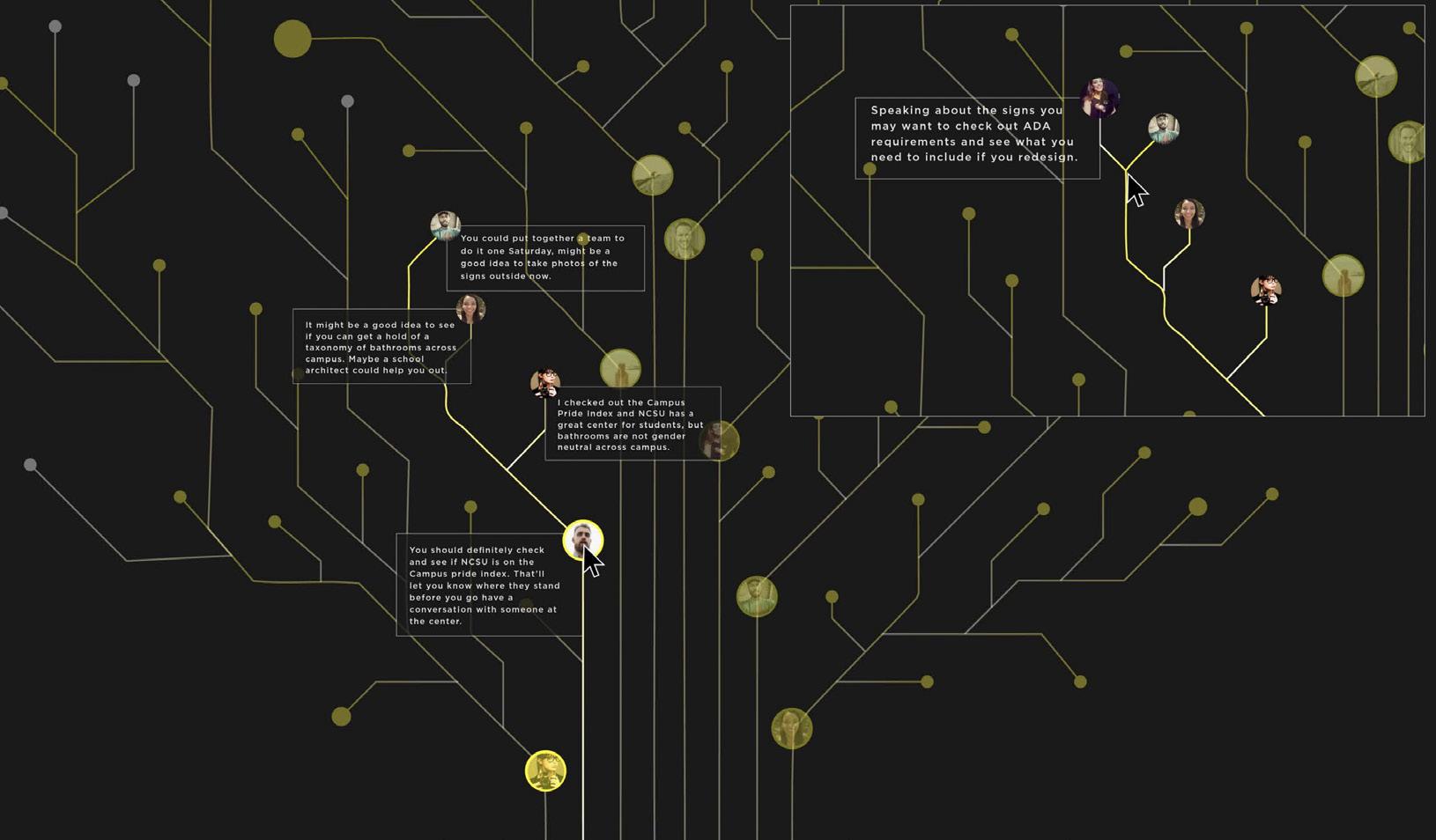
2 minute read
Sadie Red Wing
Sadie Red Wing (MGXD ‘18) is a Lakota graphic designer and advocate from the Spirit Lake Nation of Fort Totten, North Dakota. She teaches at the Ontario College of Art and Design University in the Graphic Design and Indigenous Visual Culture programs.

Where are you right now? What are you doing?
I’m sitting in Fort Pierce, South Dakota. I am employed at the American Indian College Fund for the remainder of the year where I work as a student success coach, representing a nonprofit who’s advocating for the Native American student experience in a non-tribal community, whether from a large university or small community college. Then starting in January, I will be at OCAD in Toronto to get back into an educator role. I’m interested in the ecological aspect of that definition.
Is this a design role or is it pure advocacy?
What’s your research look like?
My job description isn’t written for a designer, but I still do design work when I am asked to produce anything within the organization and I take on some side-projects. I still do guest lectures. I still speak on panels. I’ll get invited to conferences. So I still do design but my full time job is being a student advocate.
How does your design background influence how you do this job that is not traditionally thought of as or like a design job?
In my role as a student advocate, I bring in design thinking. In the tribal college I went to, we learned about frameworks of reciprocity and sustainability. In design systems and within my own research, I bring these ideas into conversations. It may not be simply visual communication. I might use some of my design education in thinking about how to build a system or what a framework looks like.
How does your identity as an indiginous person influence how you approach design?
When I was younger — in elementary school and even going to a tribal college — there were a lot of things I didn’t have. For example, say I see someone drinking a lime flavored Red Bull and I think “Man, I really want a Red Bull but I want one flavored with a fruit that is strong in my culture, like a chokecherry.” We live in a world where we can’t go to Walmart and get a pint of chokecherries. Or I want to go eat at a Native American fast food chain. I can pop in at Taco Bell. I can pop in at Burger King. I can pop in anywhere but I can’t go to a Native American fast food chain. So as designers, we’re always envisioning what the world could be like and I want to use that to see more of my culture in the world. I want Amazon Alexa to speak Lakota!
So when I talk about frameworks of reciprocity and sustainability, I’m thinking about design solutions from a completely different perspective. I can’t go to the store and get buffalo meat. To raise buffalo we need land and we know buffalo migration patterns help grasses grow and then that grass allows us to grow fruits. This doesn’t even include the physical activity that comes from tending to this land. So if I’m on a design team about how to make diabetes rates lower, the quick answer might be to design more gyms. Let’s get some dieticians in there. But we have the science of a diet that keeps us healthy but you guys killed our Buffalo! We need to talk about getting rid of the narrative of this being primitive. I’m not asking people to live like cavemen I’m just telling you my perspective and my history and my knowledge.
“I wanted to do something with my thesis where people were walking on eggshells. Even before that, I always did projects about things people really don’t want to talk about and stay away from because it’s too touchy to talk about.”











